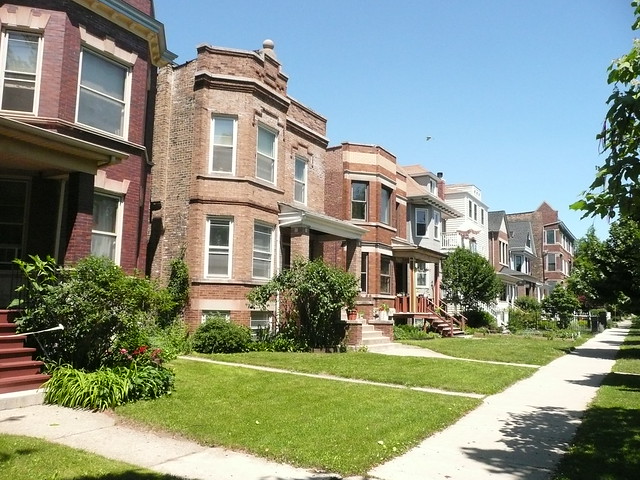^^^ I don't know about that. There aren't very many of these in Chicago or Milwaukee. It seems to be older than the Beaux Arts period. Seems to be more along the lines of 1850 or earlier. There are two different styles you've posted. The ones in Chicago are completely different than the ones in Boston and NYC.
The ones in Chicago are indeed a Beaux Artsy take on the traditional Chicago two flat. Most two flats in Chicago are simply not decorated this way because that style was only popular in two flats before Prairie Style came around about 1900. Most two flats are not built with full party walls either and usually are stand alone. These appear to be more row homey. Anything before 1871 was either wood construction or completely destroyed by the fire. That particular classicist style didn't become popular until the 1893 World's Fair, so you are looking at a ~10 year period in which that would have been popular. Prior to the World's fair very stripped down, utilitarian architecture fine detailing was popular/necessary due to the rebuilding efforts and First Chicago School of Architecture.
Thus Chicago two flats generally don't have classical detailing and were mostly built in the Prairie Period and usually have Chicago School Bay Windows on the front:

The ones in Boston and NYC are definitely not two flats. These are some kind of colonial row home. I don't know much about colonial architecture because I'm mainly interested in Chicago architecture. I'm sure there is a very specific designation for these.



